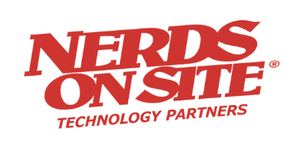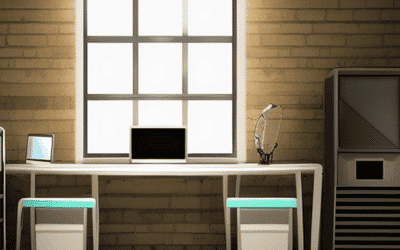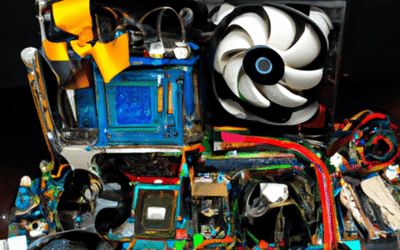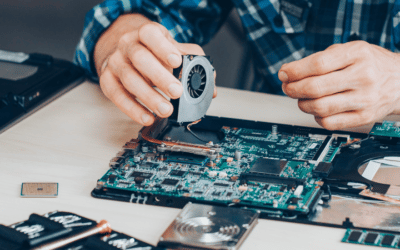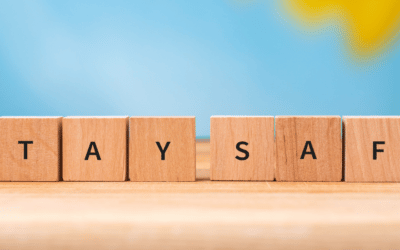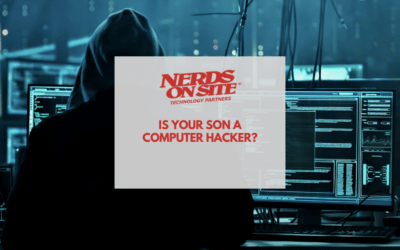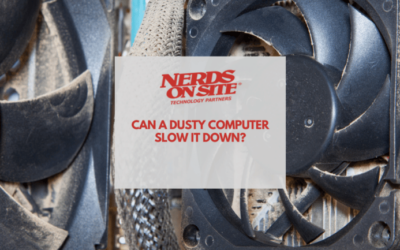Hard drive crashes happen all the time. More than just being frustrating, they can bring your business to a standstill and cost you valuable time and money trying to retrieve lost files and business data. Hopefully, your most important data and files are safely backed up somewhere. If not, recovery can be difficult—but not necessarily impossible.
Article Contents
Keep reading to discover what can cause a hard drive to crash and tips on how to retrieve lost data from a corrupted or damaged hard drive.
What Causes A Hard Drive To Crash?
There are a number of reasons why a hard drive might crash. Some of the most common reasons include:
-
- Human Error. From accidentally deleting files to dropping the hard drive itself, human error accounts for most hard drive crashes.
- Power Surges. A power surge occurs when the flow of electricity is interrupted and then restarted again. This can result in data loss when the read/write heads fail to function properly.
- Overheating. Rising temperatures inside your computer can be caused by poor ventilation, malfunctioning fans, or dust build-up. Overheating can lead to severe damage of a hard disk drive’s components, such as micro-cracks in the disc platter that can seriously compromise data.
- Corrupted Files. Sudden shutdowns and forced restarts can corrupt files and make the hard disc inaccessible.
- Water Damage. Water damage caused by spilling a liquid into the computer is never a good thing. They are not built to resist it. Water causes surges in the electrical current which can severely damage your device.
- Virus Attack. A virus attack can erase hard disc data and alter the operation of the hard disc itself.
- Mechanical Failure. Moving parts degrade over time. Things like the spindle motor might stop working properly, making the disc unreadable.
There are a lot of things that can make a hard drive crash, but it isn’t cause for total despair. In many instances, the data lost because of a crashed hard drive can be recovered.
What To Do When Your Hard Drive Crashes
Once you’ve determined the hard drive has crashed (and depending on the cause of the crash) there are different methods of retrieving data from it. If you’re technically inclined, and data recovery is not essential, you can try these methods on your own.
If it is absolutely essential to your business that the lost files and data be recovered, you should enlist the services of a data recovery professional immediately. Failed attempts to recover the data yourself may make it harder for a professional to recover the data, or worse, render the files completely unrecoverable.

If Your Hard Drive Is In The Process Of Crashing
If the drive hasn’t failed completely yet, you can try to get important data from it quickly. You can try to boot to a Windows installer disc or live Linux system and attempt to transfer just the important files off your drive. You may be able to recover some files even if your system can’t boot its operating system and run it from the drive without crashing.
You can also try pulling the hard drive and connecting it to another computer. If the drive has only partially failed, you might be able to copy a few important files off it (if it’s not totally beyond repair).
With either of these solutions, be aware that having the drive powered on may cause it to become more damaged.
If Your Hard Drive Is Completely Corrupted
-
- Connect To Another Machine
The first thing you’ll have to do is disconnect the hard drive from the current computer and connect it to another machine as a secondary drive. The best way to do this is with a USB to IDE/SATA adapter. Alternatively, you could connect the drive to another desktop computer internally as a secondary drive, though this means pulling apart another computer to install the crashed drive.
-
- Try Copying Manually
After you connect the drive to another computer, see if you can browse the contents of the drive. If you can, try to manually copy data off the drive that you would like to recover. This might not work if you are trying to recover data from a dead hard drive, but there is a chance that only the operating system is corrupt and the user data is retrievable.
-
- Install Data Recovery Software
If you can’t manually recover the lost data it’s time to download data recovery software to see if it can do the job. Data recovery software is designed to scour the drive and locate any recoverable data, piecing it back together and providing it in a usable format.
The best data recovery applications provide a preview of recovered files, filtered and searchable results, easy file restoration, and additional tools. There are many good free options to choose from. Check out Lifewire’s rating of 20 Free Data Recovery Software Tools for Windows or the Top 15 Best Data Recovery Software for Mac OS X.
IMPORTANT: do not install the recovery software onto the drive that you are trying to recover data from. Doing so could actually overwrite files that are still hidden there and that you can still restore.
When In Doubt, Enlist The Pros
Hard drive crashes are nearly inevitable. There are numerous factors that contribute to the damage and mechanical devices eventually break down over time.
The key is figuring out how to retrieve valuable data before it leads to more serious (and expensive) problems. There are ways to try and retrieve it yourself, but if the lost data is truly critical, you might be best to pay for the help of a data recovery professional.
Whichever route you decide to take, there is always a team of Nerds ready to help you out.
